Search Results
Immunotherapy
Immunotherapy uses your own immune system to fight cancer. There are several types of immunotherapies, and each works to help the immune system in a different way. Some boost your body’s immune system. Others train your immune system to attack specific cancer cells.
Immunotherapies being used or studied to treat blood cancer include:
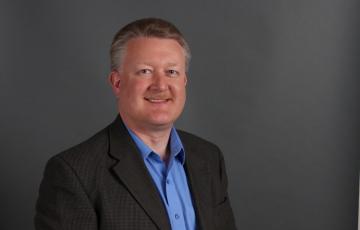
Todd
I was diagnosed at age 33 as a result of an unrelated blood test, very young, I was told. Fluorescence in situ hybridization (FISH) showed low risk. My local oncologist sent me to a regional teaching hospital to get a second opinion, and that opinion was, "If I had to pick a cancer, this would be it." Terrible start!
Pharmacological strategies to enhance T- and NK-cell-based therapies in blood cancers
Although they represent a major therapeutic progress for blood cancers, CAR-T cells and other T-cell based therapies are subject to eventual development of resistance to many patients. Natural killer (NK) cell-based therapies are highly active against many types of blood cancer cells which are resistant to T cells, but in our CRISPR studies death receptor signaling defects emerge as a common downstream mechanism of resistance to both T- and NK-cell therapies.Chemotherapy and Drug Therapy
The main treatment for active myeloma is systemic drug therapy (meaning the drugs travel through the bloodstream to kill malignant cells). The initial therapy, or “induction therapy,” for myeloma usually includes a combination of targeted agents and/or standard chemotherapy. This therapy is often followed by stem cell transplantation in eligible patients.
Common drugs combinations for people with newly diagnosed myeloma include:
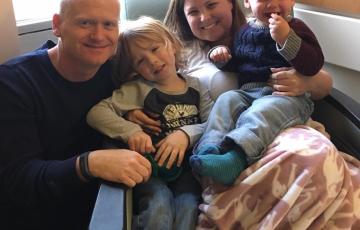
Allyson
In November 2016 I was tired. TIRED. I had a 20-month-old and a 4-year-old, had just come off the busiest month of the year for work, and I figured I was tired for no other reason. But then tired became not having the energy to take care of my 20-month-old. Tired became going to be my best friend's wedding and needing to lay down in between steps. Shower, lay down. Makeup, lay down. Hair, lay down. Get dressed, sit for a minute. Walking a long hallway seemed daunting. And then carrying my son from my car at a gas station to the restroom inside on a road trip was too much.
Zach
It was 2020, and besides the obvious chaos in the world, at that time my life was going great. My business was thriving, I had just gotten engaged, and my fiancée and I were beginning to talk about starting a family. I was at what felt like the peak of my life. Everything was going my way, or so I thought.
Immunotherapeutic Targeting of FCRL1 in CLL
Evolving insights into the B cell-restricted FCRL1 surface protein reveal that it integrates with critical signaling pathways and is a promising immunotherapeutic target in CLL. Based on preclinical evaluation of novel FCRL1 monoclonal antibodies, we propose developing chimeric antigen receptor (CAR) T cells for targeting in unique mouse models and patient-derived cells. The results will form the basis for strategic drug development and clinical testing in CLL and related B cell malignancies.T cells with native and chimeric receptors against multiple tumor targets for acute myeloid leukemia
Adoptive T cell therapies for acute myeloid leukemia face numerous hurdles such as limited target antigens, immunosuppressive tumor environment as well as the loss of efficacy due to downregulation of the targeted antigen. The goal of our project is to address some of these challenges with a single T cell product targeting multiple tumor associated antigens that have limited expression on healthy tissues via a novel combination of native T cell receptor and gene engineered CAR targeting.Targeting the cell surface U5 snRNP complex as a novel immunotherapy for AML
A major limitation of immunotherapy approaches for AML has been the lack of known targetable cell surface antigens specific to AML cells. This project characterizes the pathologic and biologic effects of a novel cell surface antigen complex uniquely present on AML cells but not normal hematopoietic precursors, known as the U5 snRNP complex. Furthermore, we will interrogates U5 snRNP complex components as novel AML-associated antigens and CAR T cells targets for AML treatment.
Elisa
I was diagnosed with stage IV Hodgkin lymphoma (HL) in April 2022 at 27 years old. After months of debilitating symptoms and a week-long hospital stay, I finally had an answer as to what was going on with my body. I was relieved to have an answer, but "cancer" was the last thing I expected. Ironically, after my diagnosis and first chemotherapy infusion, I felt better than I had in months. I didn't feel like I had cancer; the only reminders were a few enlarged lymph nodes and the mediport protruding from the right side of my chest.
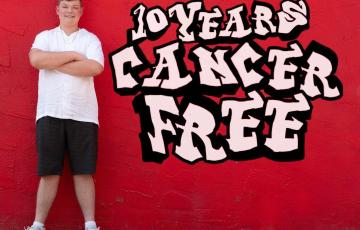
Austin
Four were spoken that day. Four crushing, breathtaking words, “Your son has cancer.” My world, my life, and my dreams for my son’s future suddenly halted while the rest of the world kept going on around us on May 14, 2011. Only days before, I was deciding what theme to have for his third birthday party and what outfit he would wear for his pictures. Days later, my husband and I were signing consents for the specific protocol of poison that would be pumped into Austin and having to digest the laundry list of possible side effects.
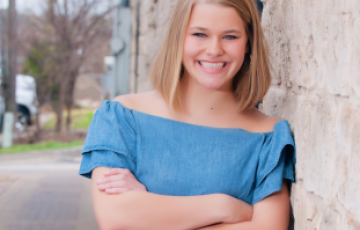
Rylie
My name is Rylie York, I am 20 years old and I'm currently a sophomore at Baylor University. I'm originally from Round Rock, Texas and I am a patient at Texas Children's Hospital in Houston, Texas. I was diagnosed with stage 4 Hodgkin’s lymphoma at 18 in the middle of my senior year of high school. I have relapsed twice since then and completed my bone marrow transplant this past August and September.

Will
I am a cancer mom. I WAS a cancer mom. My youngest son, Will, was diagnosed with Hodgkin lymphoma (HL) at age 19 in April of 2019. He, his dad, and I were beyond shocked when we heard the news that the swollen lymph nodes that came up out of the blue one March morning were indeed HL. We didn't really know anybody personally that had it. We didn't know what exactly all the words meant at that moment in time, but we knew it wasn't what we had planned for our youngest son.
Precision Medicine Inhibitor and Immunotherapy Approaches for High-Risk Childhood Leukemias
Dr Tasian’s scientific passion is successful development of precision medicine therapies for high-risk childhood leukemia. Her translational laboratory research program focuses upon investigation of kinase inhibitors and chimeric antigen receptor (CAR) T cell immunotherapies in childhood ALL and AML using primary patient specimens and patient-derived xenograft models. Through her laboratory and clinical research, she aspires to improve cure rates and minimize toxicities for children with leukemia.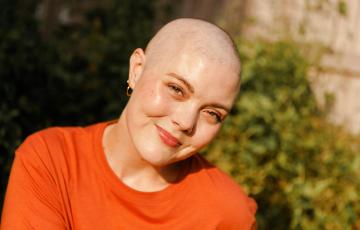
Elisabeth
I was first diagnosed at 12 years old when I didn’t even know what the word cancer meant. I remember sitting at the kitchen table with my family, laying my head down and sobbing because they told me I would lose my hair. I have lost my hair five times since. You see, fighting tooth and nail for your life at a young age produces a certain type of grit ― one where you choose daily to do hard things while also stopping to smell the flowers on the way, one where you enjoy the little moments most take for granted because tomorrows were never promised.
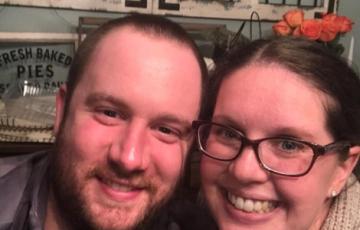
Mike
It started with a cough that would not go away. A cough so bad that it would stop him in his tracks and he'd have to rest afterwards for a few minutes just to catch his breath and regain strength. This was in March 2016. My husband, Mike, was like any other 31 year old "healthy" person. He figured the cough was allergies or a stubborn cold. He finally agreed to go to urgent care because of course he didn't have a primary doctor. The doctors had the same thoughts: allergies or a stubborn cold. They treated him for these things and none of them helped.
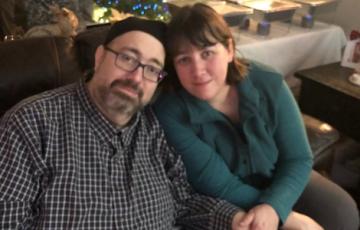
Paul
My husband's story began in July 2018, when he suddenly became ill. I rushed him to the ER. The shocking diagnosis, multiple myeloma. Three weeks prior to his hospitalization he had a physical with blood work, all was normal.
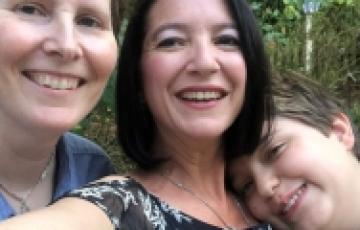
Tricia
My story is truly about the little family that could. In 2002, I felt I had it all: a loving partner, a new job offer, and plans to start a family. Upon my return from a business trip in May, that feeling shifted as a large lump appeared on the side of my neck. Several doctor visits, tests, and sleepless nights later, I received a phone call on the way to a meeting from a doctor. He asked me to pull the car over. He told me I had cancer. Everything stopped.

Steven
My name is Steve. My purpose is to give others hope and the possibility of tomorrows. I am a leukemia survivor, specifically myelodysplastic syndrome (MDS). Today, one year after my bone marrow transplant, I am 100% cancer-free!
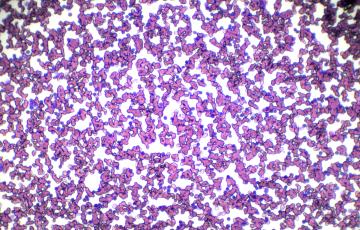
Predisposing factors to leukemia
Table of contents:

Rick
Rick Ostroff and his family have a legacy of philanthropy with a heartfelt connection to a disease he never had. During the first three years of his life, he spent time on the leukemia floor of Children’s Hospital in Boston but eventually was found to have the critical illness of gamma globulin anemia rather than then-fatal leukemia.
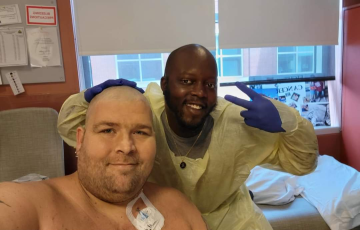
James
My story starts like everyone else’s. I was living my life, working every day, and coming home to my four children and my wife. But my wife and I started to notice how tired I was becoming. I would always sleep. I could just be waking up, and by the time I got ready for work, I was passing out in my chair. When I got a lunch break, I would sleep in my truck. I would always feel like I couldn’t get enough to drink; I was always thirsty. I barely ate anything, and I was getting fevers and the shakes. I could be hot and sweating, but I would be cold and shaking if that makes any sense.
Treatment
In general, the goal of treatment is to destroy as many lymphoma cells as possible and to induce a complete remission. Complete remission means that all evidence of disease is eliminated. Patients who go into remission are sometimes cured of their disease. Treatment can also keep non-Hodgkin lymphoma (NHL) in check for many years, even though imaging or other studies show remaining sites of disease. This situation may be referred to as a “partial remission.”
Central Nervous System (CNS) Lymphoma
General InformationCentral nervous system lymphoma is a rare non-Hodgkin lymphoma in which malignant (cancer) cells from lymph tissue form in the brain and/or spinal cord (primary CNS) or spread from other parts of the body to the brain and/or spinal cord (secondary CNS). Because the eye is so close to the brain, primary CNS lymphoma can also start in the eye (called ocular lymphoma). The cancer can also involve the spinal fluid that bathes the spinal cord and brain. This is called leptomeningeal lymphoma. Both primary and secondary CNS lymphomas are rare diseases.

What Is Blood Cancer?
Reviewed by Gwen Nichols, MD, EVP and Chief Medical Officer at The Leukemia & Lymphoma Society